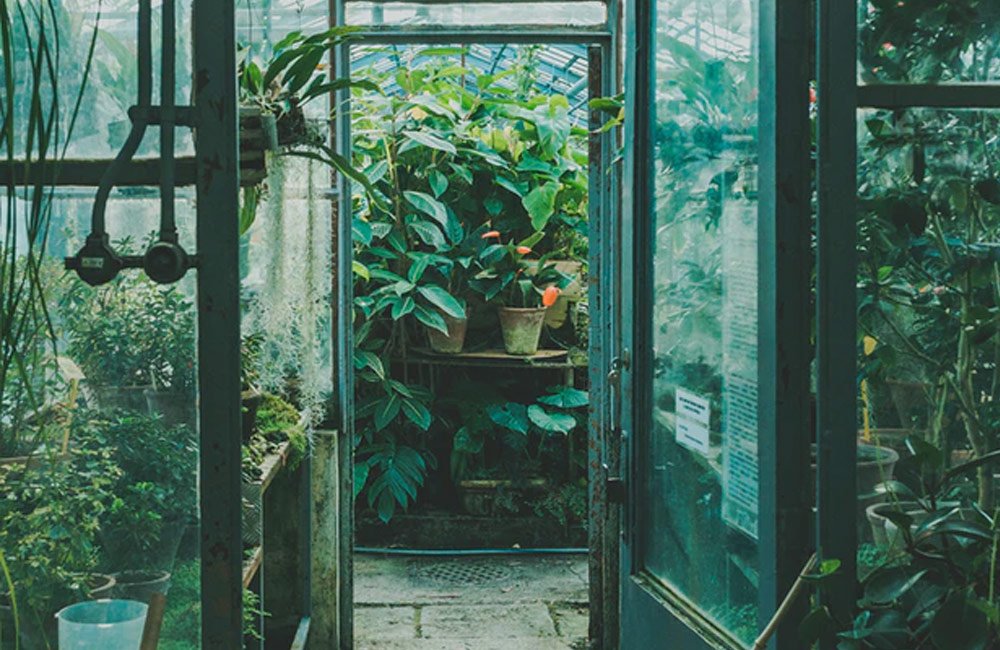How To Heat Your Greenhouse in Winter

It is becoming more and more important to learn how to heat a greenhouse efficiently because fuel is pricey and gardening without causing harm to the environment is one way people can give back to mother nature. Keep reading for some great advice on how to heat your greenhouse with minimal energy usage.
Electric vs Gas
If your goal is to save money you are better off to heat your greenhouse with electricity rather than gas. The need for ventilation when burning gas reduces the savings you may have had from burning it. Furthermore, a gas heater is only useful for those plants that thrive in lower temperatures. Electricity is more easily controlled and safer to use in a greenhouse.
There are some good possibilities of more environmentally friendly choices in the future such as ground source heat pumps but for now, they are not practical for use in a privately owned greenhouse.
You can shop all greenhouse heaters here.
Heat Sinks/Thermal Mass
If you have a smaller greenhouse it may be possible to create a no-cost heating option by building a heat sink. A heat sink absorbs the heat from the sun during the day and releases it at night or when it cools down. There are a couple of different options that will work well as a heat sink.
Plastic bottles are great simple and low-cost heat sinks. Begin by painting several plastic bottles black. Fill them with water and place them all around your greenhouse. The bottles will absorb the heat from the sun during the day. In the evening they will release the heat into your greenhouse. It may not seem like much, but it can make a big difference to your plants.
A second option is to build a thermal mass floor. You can do this by putting concrete slabs down on the floor of your greenhouse. The concrete acts as a heat sink because it is a material that will absorb the heat when it is hot out and release it as it cools down. if you opt for a concrete slab floor, it will act as a heat sink too. Some people choose not to pave the inside of their greenhouse, and that’s fine - but remember that having some concrete slabs will help you control the environment more. And while everything runs free and wild outside - a greenhouse is a controlled environment by definition!
How to Insulate Your Greenhouse Effectively
You will usually lose heat from your greenhouse because of draughts and building structure. Use the following tips and ideas to improve the heat holding capacity in your greenhouse.
- Look for any cracks and seal them with caulking.
- All broken window panes should be replaced.
- All vents and doors should fit tightly without any space for draughts.
- Decide if your priority is adding heat or adding light. If you need to add heat, double up be installing a sheet of bubble polythene. This will further insulate the greenhouse but be aware that an extra layer of plastic will significantly reduce the amount of light that gets into your greenhouse. This will affect the growth of your plants as well.
- Using a transparent sealant can help stop draughts, just ensure that your structure can still flex in strong winds so you don’t end up with broken window panes.
- Look at your seals on the doors and vents, if there are leaks you may want to replace the seals or even tape plastic sheeting over the whole area.
- If your greenhouse is very large it may be helpful to limit the areas that need to be heated. It may be possible to do this by screening some parts of the greenhouse off with polythene and battens.
- Keep your plants warm by covering them with fleece or warm sheets when it is extremely cold outside. Consider using roll-down blinds or thermal screens to cover the entire greenhouse. They will have to be rolled up each morning and rolled down at night to be effective.
- Gain some knowledge about the perfect temperature for your plants. You can save money by not heating it up too much. 3ºC (37ºF) is usually high enough to keep your plants alive but beware of the colder spots in your greenhouse. This temperature is also worrisome if your plants are damp.
- If you want true peace of mind we recommend keeping your greenhouse temperature at a minimum of 7ºC (45ºF). At these low temperatures, you will save on heating costs, but you may need to employ some additional strategies such as covering your plants with fleece.
If you choose to increase the temperature in your greenhouse using containers of water to give off warmth be aware that if the water freezes your plants will already be irreparably damaged.
Potential Issues
During the winter there is little to be done about dampness and the resulting moulds and rots. Be sure to avoid dampness by ventilating on sunny days and using heat to dry out your greenhouse if you need to. It is better to spend a little bit extra on heat than lose your plants.
There are certain plants that need a high-intensity light. Insulating your greenhouse too much by adding a sheet of plastic or double glazing will cause these plants damage. Do your research before planting if your greenhouse is highly insulated. Winter lettuce and alpines are two crops that will not do well in a well-insulated greenhouse without grow lights.
On the other hand, there are plants that need little light but must never be allowed to freeze. In this case, an extra layer of insulation is well worth it. If you want to grow both types of plants it may be practical to consider a compromise, such as installing an extra layer of bubble polythene to the north-facing wall only, allowing the full light intensity to shine through in the rest of the greenhouse.
Related articles:
- How to Adjust a Greenhouse Auto Vent
- How to Heat a Greenhouse Without Electricity
- How to Heat a Greenhouse
- Are Paraffin Heaters Safe?
- How to Insulate a Greenhouse
- How to Attach Bubble Wrap to a Greenhouse
- How to Shade a Greenhouse
- Internal vs External Shade for a Greenhouse
- What is a Greenhouse?
- How Does a Greenhouse Work?
- Why Do Plants Grow Faster in a Greenhouse?
- Greenhouse Shading & Insulation
- Greenhouse Ventilation
 Author:
Author: